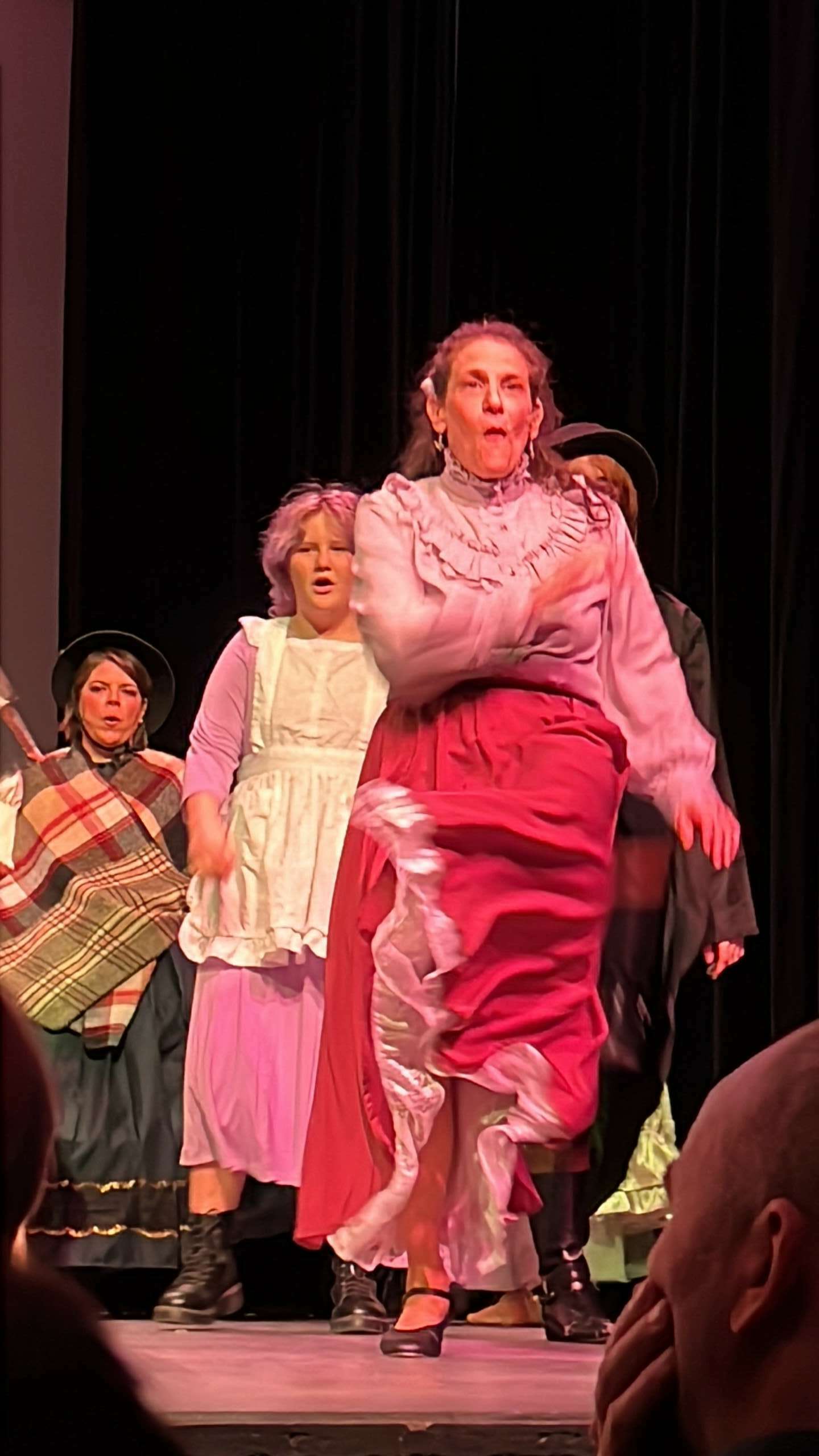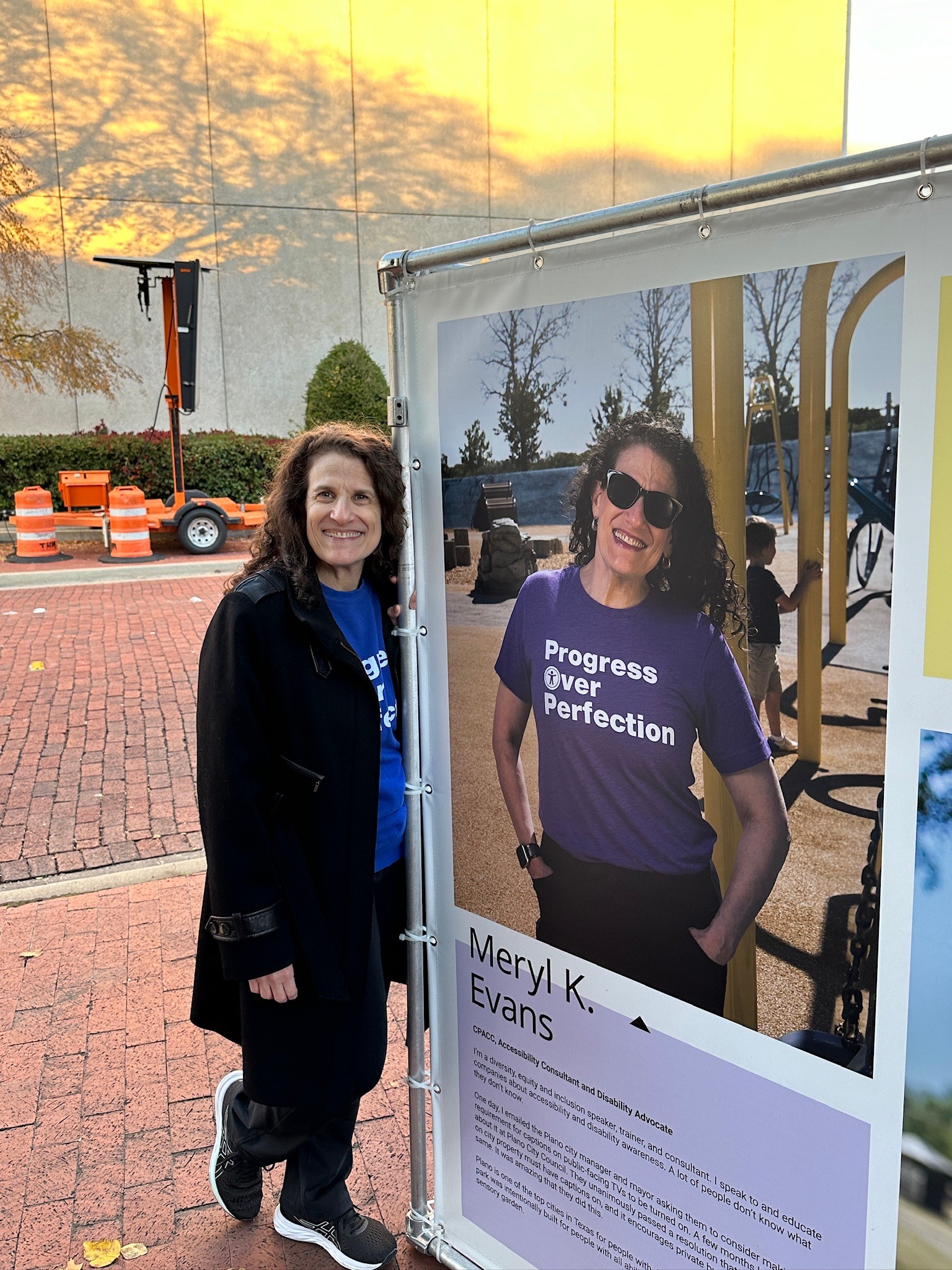We recently connected with Meryl Evans and have shared our conversation below.
Meryl, thanks for taking the time to share your stories with us today We’d love to hear the backstory behind a risk you’ve taken – whether big or small, walk us through what it was like and how it ultimately turned out.
I’ve been self-employed since 2005. Around 2018, a client had been encouraging me to make videos. While I’m a marketing professional who knows the value of videos, I was realistic. I knew I had an accent that hails from nowhere accessible by travel. I wasn’t sure how people would respond to my accent.
I made a short video asking a question and captioned it. To my surprise, it did well. So, I started making videos about marketing since that was my core business. I’ve been dependent on captions for decades. This time, I was on the other side of the captions, creating them.
From there, I transitioned to making videos on why adding captions is only part of the equation for high-quality, accessible captions. In 2019, the team at Knowbility’s AccessU invited me to do a presentation about captions at their accessibility conference. When I got there, I felt like I had finally found my passion, my ikigai. That means life purpose in Japanese.
I knew I wanted to work more in accessibility but wasn’t sure how or what. The founder of an accessibility consultancy saw my posts on LinkedIn and brought me on as a marketer. Also, someone who saw me speak at AccessU invited me to speak at her virtual meetup. The speaking invitations multiplied from there to TEDx as well as paid speaking engagements. These invitations to speak told me that my accent didn’t matter. It was about what I shared.
I didn’t want folks to think I got invitations because of my disability – which is ironic considering people with disabilities struggle to get hired — or that my knowledge was limited to my disability. I care about equitable access for everyone. So, I studied harder than I’ve ever had in my life for the International Association of Accessibility Professionals (IAAP) Certified Professional in Accessibility in Core Competencies (CPACC). And by some miracle, I passed.


Awesome – so before we get into the rest of our questions, can you briefly introduce yourself to our readers.
Around 2000, I started doing a little writing on the side. I never planned to go into business for myself because I knew it would be harder to bring in clients when you have a disability. I was born profoundly deaf.
By 2005, I went to work for myself full-time and transformed from writing to digital marketing. All my clients were great and were happy to work with me without phone calls. I’ve been a full-time remote worker and I pulled this off without phone calls or meetings.
I pivoted in 2018 as I told in the previous story. I still complete marketing-related projects for clients. I added speaking, training, and consulting related to accessibility and disability inclusion to my services.
What sets me apart from others is that I focus on all accessibility and all disabilities. Some people prefer to have a specific area of focus, such as hearing disabilities, blind disabilities, building accessibility, digital accessibility, and so on.
I consider the big picture of accessibility and disability inclusion. It’s not about my needs and preferences. It’s about creating more inclusive experiences, workplaces, and products for everyone.
The other thing that helps me stand out is my progress over perfection mindset. It helps people think of accessibility and disability inclusion in a different way instead of something to fear or overwhelming. It also encourages advocates to educate not berate, which scares people away.
I’m proud of the speaking work I’ve done. The talks I give outside of disability and accessibility conferences and organizations are the ones that stand out to me. It’s people who don’t attend disability and accessibility-related events who need the message most to be more inclusive of disabilities and to bake accessibility into their organizations.


Any insights you can share with us about how you built up your social media presence?
It takes a lot to become a LinkedIn Top Voice. (This is different from Community Top Voices.) It’s an invitation-only program featuring a global group of experts on LinkedIn covering a range of topics across the professional world, helping members uncover valuable knowledge relevant to them.
Top Voices are vetted to ensure that they meet high trust standards, are consistently active on the platform, and share valuable expertise through content that demonstrates their unique, original contributions to a topic.
I’m proof that someone who isn’t an executive of a large company or a known person in any industry can become a Top Voice. My road to becoming a Top Voice started in 2018. I posted, engaged in conversations, and commented on other people’s posts every day.
Apparently, I’ve got a recognizable writing style because I’ve had people reach out with a link to someone else’s post. They asked if it was my post. It turned out the posts were a copy / paste of my posts with a tweak or two. They said they just recognized the Meryl-style. I’m not sure what it is because I simply write conversationally. That’s a common practice in social media.
My advice is to engage meaningfully. Don’t just be a megaphone. I work to respond to every comment and thank people. I look for a variety of posts to comment on. When I write comments, I work to ensure they’re thoughtful and more than just a “Great post!” type of response.
When I write posts, I share other voices and my own thoughts. I don’t just rehash something people already know. I try to avoid sounding like “my way or the highway.” I’ve had conversations where people have changed my mind about something. I use the progress over perfection mindset by writing educational posts.


Can you share a story from your journey that illustrates your resilience?
I was getting ready to start training for my second half marathon. Before I started, I ended up in the hospital with an emergency appendectomy. After receiving approval from the doctor to start working out again, I started training for the half marathon. I could not walk one mile. Usually, a mile is easy breezy for me.
I kept at it. Eventually, I could walk longer distances and then switched to jogging when it felt right. I’m a very competitive person. It comes from my years of playing sports and my disability. I never wanted people to think I was not capable or that I was less than. Somehow, I beat my previous time by 10 minutes and got a sub-2! This means I completed the half marathon in under 2 hours.
I’ve acted in plays, but never in a musical. While I love musicals, I knew I couldn’t perform in them because I cannot sing. Period. I have a deaf accent when I speak, so there’s not enough time in the world for me to work hard enough to turn into a decent singer. I don’t have an understanding of different notes. I can only sing one note: none.
Anyway, North Texas Performing Arts (NTPA) does a community production (adults and kids) of “Scrooge the Musical” every year. A friend of mine was in it and the director encouraged me to audition.
I had to work very hard to learn the dances. I’d watch the dancing videos over and over until I had them memorized. Once I had them memorized, I looked at the lyrics to find patterns between the words and moves.
Someone recorded the first dress rehearsal. I’m so grateful they did that because I saw something I didn’t realize I was doing. I kept looking to the left and right to make sure I was in sync with the song and other dancers. Plus, I needed to smile! (I was focused on the mechanics.) I fixed the problems and it made a huge difference.
I learned all the songs I performed in though I lip-synced the songs. I wanted to look like I was singing the right words. I didn’t want to sit there close-mouthed or make up fake words. People can tell when you don’t know the words. Just watch RuPaul Drag Race’s lip sync competitions! It takes me a long time and a lot of repetition to learn a song by heart.
The hard part was I could barely hear the music while on stage. It was easy during rehearsal as it’s a different recording. You know how a song recorded in a studio sounds different from a song recorded at a concert? That’s the difference. I can’t hear songs recorded in a concert setting.
I made corrections and it made a huge difference. It was a joyous experience. I loved it so much that I’ve already auditioned for the next community show. This one will have more ambitious dancing that includes tap.


Contact Info:
- Website: http://meryl.net
- Instagram: https://www.instagram.com/merylke/
- Facebook: https://www.facebook.com/merylkevans
- Linkedin: https://www.linkedin.com/in/meryl/
- Twitter: https://twitter.com/merylkevans
- Youtube: https://www.youtube.com/merylkevans
- Other: TEDx Talk: http://meryl.net/TEDx
Image Credits
D CEO: Bret Redman TEDx (Without the TEDxPlano in it): Ronnie Blea


